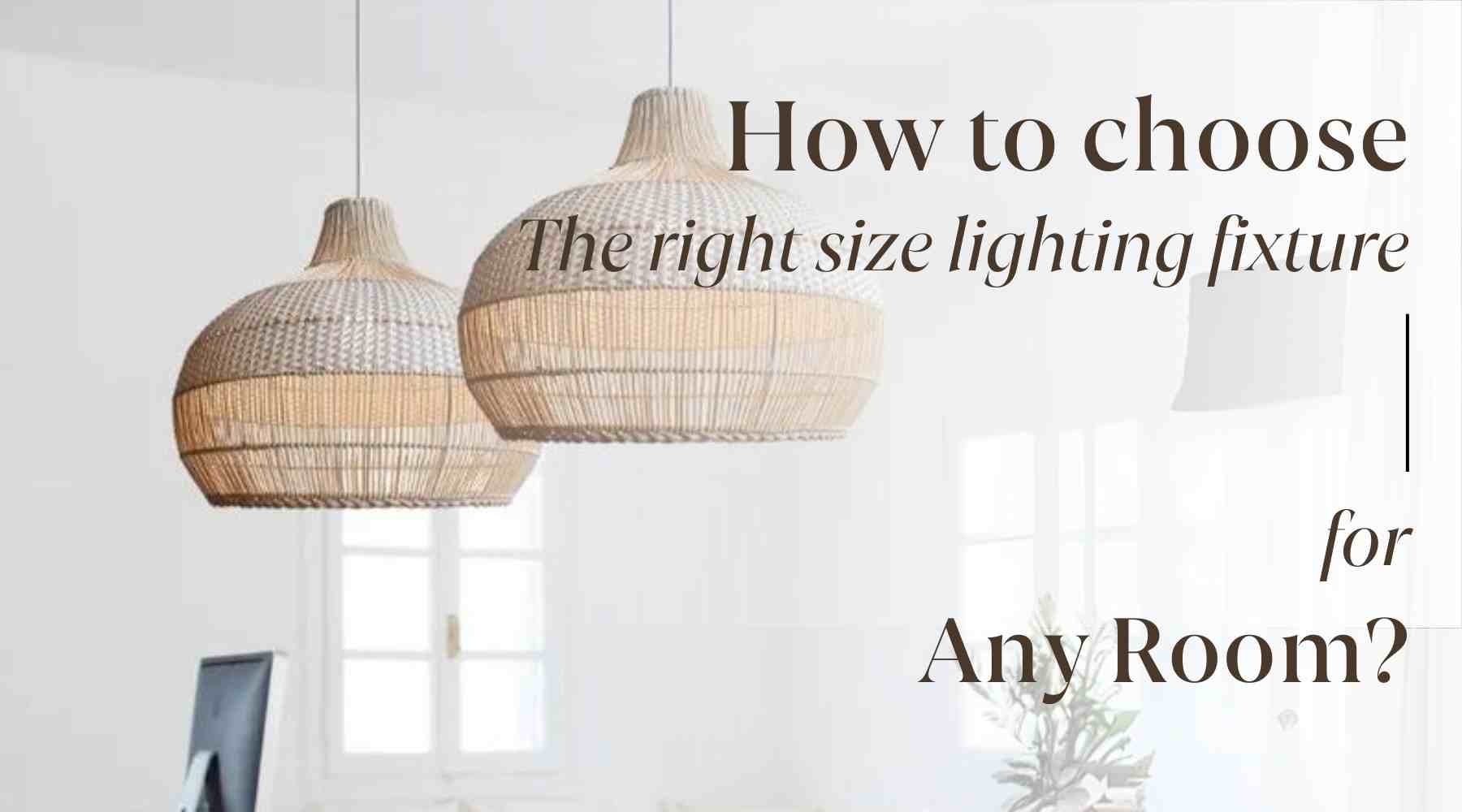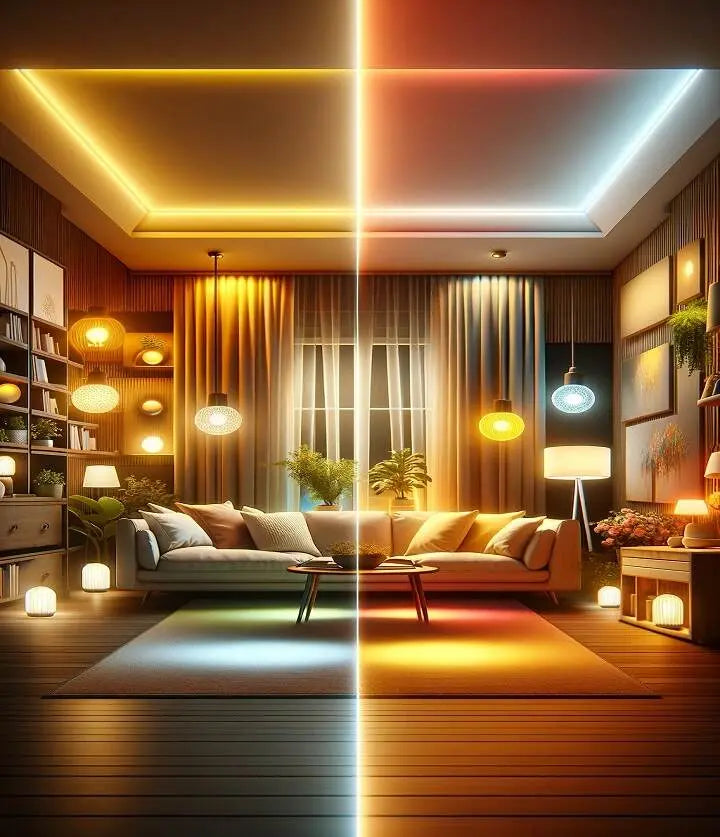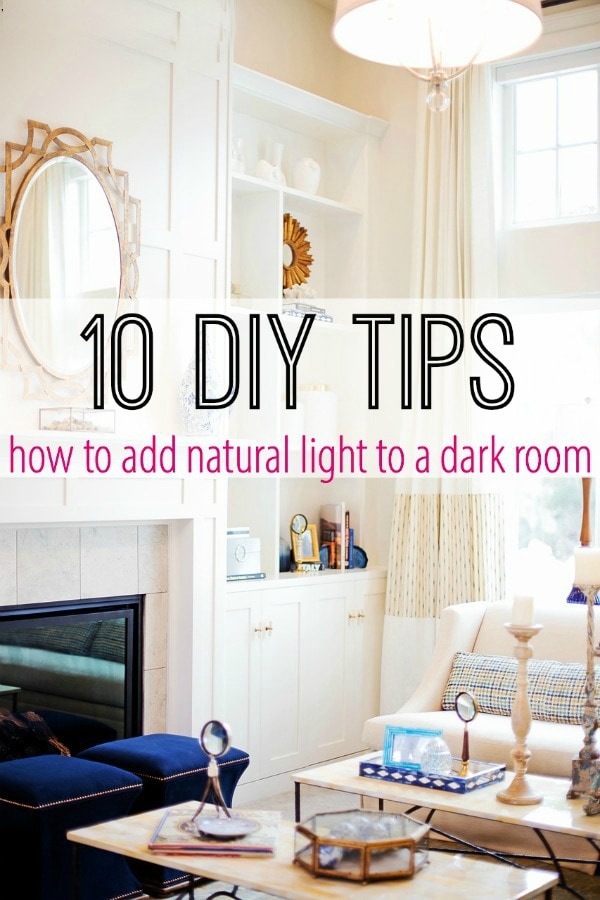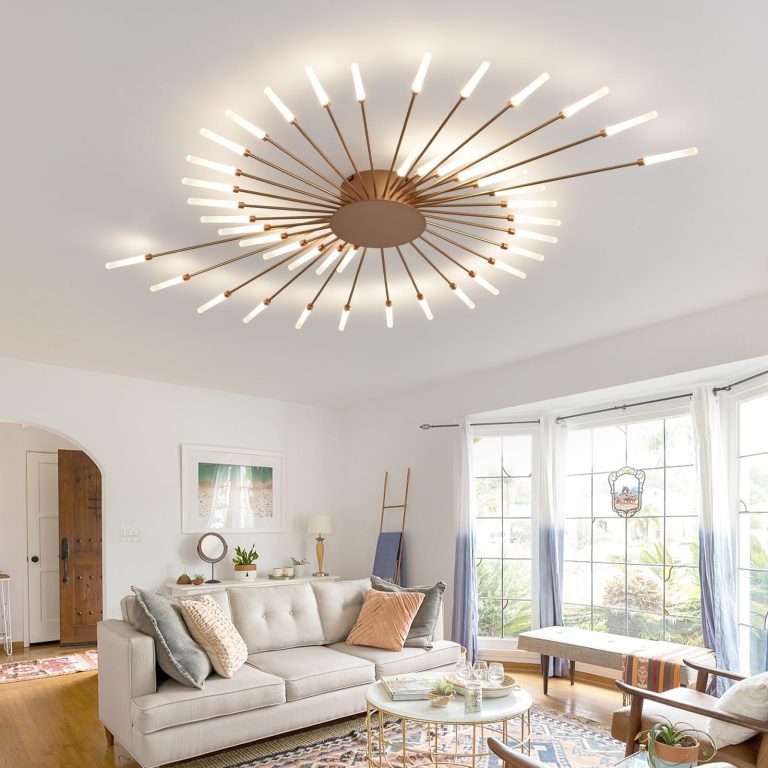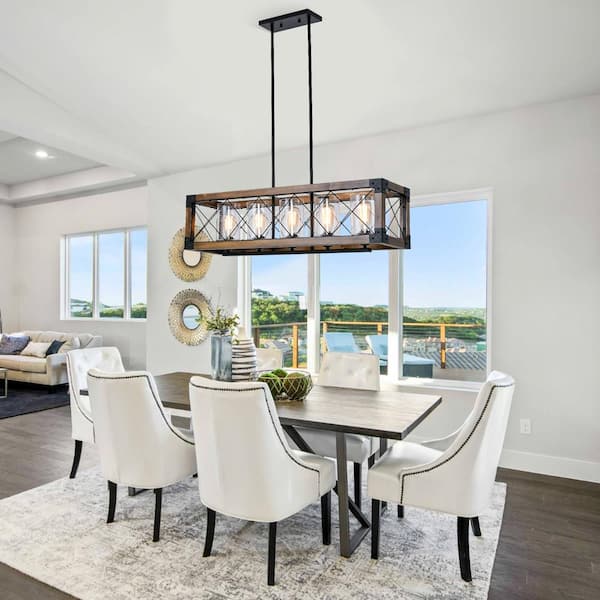What Size Light Fixture for Room? Find Your Perfect Fit!
Choosing the right size light fixture for your room might seem like a small detail, but it can make a big difference in how your space feels and functions. Imagine walking into a room that’s perfectly lit, where the light complements the decor and enhances the ambiance.
Sounds inviting, doesn’t it? Yet, many of us struggle with picking the right fixture size, often ending up with something too big or too small, which throws off the balance of the entire room. You deserve a space that feels just right, where lighting plays its role seamlessly in creating warmth and comfort.
Whether you’re redesigning your living room, sprucing up the kitchen, or adding a touch of elegance to your bedroom, getting the size of your light fixture right is crucial. We’ll guide you through simple steps to ensure your light fixture not only fits your room perfectly but also elevates its overall appeal. Let’s illuminate the path to a perfectly lit room together.
What Size Light Fixture for Room?
Room Dimensions And Light Size
Choosing the right light fixture size depends on room dimensions. A larger room needs a bigger fixture to spread light evenly. For smaller rooms, opt for compact lights to maintain balance and avoid overpowering the space.
Choosing the right light fixture for your room can make a significant difference in both functionality and aesthetics. The size of the fixture is crucial to ensuring your space is well-lit and visually appealing. But how do you determine the right size? It all starts with understanding your room dimensions.
Read More: How to Wire a Room With Lights And Outlets Efficiently
Understanding Room Dimensions
Your room’s dimensions play a pivotal role in selecting the perfect light fixture. Measure your room’s length and width in feet. Add these numbers together to get a total. This total, converted into inches, is the ideal diameter for your light fixture. For example, if your room is 10 feet by 12 feet, a 22-inch diameter fixture would be a great fit.
Adjusting For Ceiling Height
Ceiling height is another factor to consider. For rooms with ceilings less than 8 feet high, opt for flush or semi-flush mounts to avoid overwhelming the space. In rooms with higher ceilings, pendant lights or chandeliers can add elegance and depth. Ensure the fixture hangs at least 7 feet above the floor to provide adequate clearance.
Light Fixture Placement
Where you place your light fixture can alter its impact. Centering it above a dining table or seating area focuses light where it’s needed most. In a long hallway or large room, consider using multiple fixtures for even illumination. The goal is to enhance the room’s functionality while maintaining a balanced look.
Personal Experience: The Living Room Dilemma
I once struggled with choosing a fixture for my living room, which had high ceilings and an open layout. Initially, I chose a small fixture that barely made a statement. After reassessing the room dimensions and opting for a larger chandelier, the transformation was incredible. The room felt more cohesive and inviting. Have you experienced a similar challenge? Understanding your room’s needs can make all the difference.
Practical Tips For Choosing The Right Size
– Measure your room: Length + Width = Ideal fixture diameter in inches.
– Consider ceiling height: Adjust fixture type based on height.
– Think about placement: Position fixtures for optimal light distribution.
– Test before buying: Use online tools or apps to visualize different sizes and styles.
Choosing the right light fixture size requires careful consideration of your room’s dimensions and layout. What will you choose for your next room makeover? Remember, the right fixture not only lights up your space but also adds character and style.
Ceiling Height Considerations
Choosing the right light fixture size for your room can seem daunting. One crucial factor to consider is the ceiling height. The height of your ceiling impacts how a light fixture looks and functions. A fixture that is too large or hangs too low can overwhelm a space. Meanwhile, a fixture that’s too small may not provide enough light. Understanding ceiling height considerations helps create a well-lit and balanced room.
Standard Ceiling Heights
Standard ceilings are typically 8 to 9 feet high. For these ceilings, choose a fixture that hangs 12 to 20 inches from the ceiling. This ensures enough clearance while providing ample light. A flush mount or semi-flush mount fixture works well here.
High Ceilings
Ceilings 10 feet or higher require different considerations. A larger, more dramatic fixture suits these spaces. Chandeliers or pendant lights work beautifully. Ensure they hang 24 to 32 inches from the ceiling. This adds elegance without crowding the room.
Vaulted Ceilings
Vaulted ceilings create a striking visual. Choose a fixture that complements this unique architecture. Hang the fixture 30 to 34 inches from the highest point. This highlights the ceiling’s height and grandeur. A multi-tier chandelier or elongated pendant enhances the space.
Low Ceilings
Low ceilings, under 8 feet, need careful selection. Opt for flush mounts or low-profile fixtures. These provide light without taking up vertical space. Ensure the fixture doesn’t hang lower than 7 feet from the floor. This maintains clear walking paths.
Style And Design Match
Choosing the right light fixture size enhances room aesthetics. Large fixtures suit spacious areas, while smaller ones fit cozy spaces. Balance fixture size with room dimensions for harmonious design.
Choosing the right light fixture size for a room isn’t just about measurements; it’s about style and design harmony. A well-chosen fixture can enhance the room’s aesthetic and create a cohesive look. But how do you ensure your light fixture matches your room’s style and design?
Consider The Room’s Existing Style
Look around your room. What is its current style? Is it modern, rustic, or traditional? Your light fixture should complement this existing theme. A sleek, minimalist chandelier might look out of place in a rustic setting, while a vintage pendant light may not suit a contemporary room.
Read More: How to Add Light to a Dark Room? Brighten Up Fast!
Match The Fixture With Room Colors
Take note of the dominant colors in your room. Matching the light fixture with these hues can create a seamless look. If your room features cool tones, consider a fixture in silver or chrome. For warmer palettes, brass or gold could be a better fit.
Pay Attention To The Room’s Function
Consider what the room is used for. A kitchen might benefit from bright, functional lighting, while a bedroom may need something softer and more ambient. Choose a fixture that aligns with how you use the space. Would a dimmable option enhance the room’s versatility?
Scale And Proportion Matter
The size of the fixture should be proportionate to the room. A large chandelier can overwhelm a small room, while a tiny pendant might get lost in a spacious area. Use the room’s dimensions to guide your choice. Have you ever walked into a room and felt the light fixture was just “off”? It’s often a matter of scale.
Think About Your Personal Style
Your home should reflect your personal taste. Do you lean towards bold, statement pieces, or do you prefer subtle, understated designs? Choose a light fixture that resonates with you. After all, you’re the one who will see it every day.
Test The Fixture’s Impact
Before committing, visualize how the fixture will look in your space. Some stores offer virtual try-ons, or you can use a simple paper cutout to gauge size and impact. Does it enhance the room’s ambiance or detract from it?
Choosing a light fixture that matches your room’s style and design is more than an aesthetic choice. It’s about creating a space that feels right to you. As you consider these factors, remember that your home is a reflection of who you are. What story do you want your space to tell?

Credit: www.franklinlighting.com
Functionality And Light Output
Choosing the right light fixture size impacts functionality and light output. This involves understanding how light affects space and mood. Proper lighting enhances room functionality and ambience. It is essential to balance fixture size with light output to achieve desired effects.
Functionality Of Light Fixtures
Light fixtures serve specific functions in different spaces. Task lighting helps in focused activities like reading. Ambient lighting provides overall illumination for a room. Accent lighting highlights art or decor. Consider the room’s primary function when selecting a fixture.
Light Output Considerations
Light output is measured in lumens. Higher lumens mean brighter light. Room size and ceiling height affect needed lumens. Small rooms require fewer lumens than large rooms. Ensure light fixtures provide adequate illumination for activities.
Balancing Fixture Size And Light Output
Large fixtures can overwhelm small spaces. Small fixtures may not provide enough light for large rooms. Choose a fixture size proportional to room dimensions. Ensure it complements the desired light output. This balance creates a harmonious and functional space.
Measurement Tips And Tricks
Choosing the right size light fixture matters. It can transform your room’s look. But, how do you measure for the perfect size? Don’t worry. We have some simple tips and tricks. These will help you find the right fit for any room.
Measure The Room’s Dimensions
Start with the room’s dimensions. Use a measuring tape. Measure the room’s length and width in feet. Add these two numbers together. This sum will guide you in inches. It shows the best diameter for your light fixture. For example, a room of 10 by 12 feet needs a 22-inch fixture.
Consider Ceiling Height
Ceiling height plays a role too. For ceilings less than 8 feet, choose low-profile fixtures. For higher ceilings, opt for longer fixtures. A general rule is to hang a fixture 7 feet above the floor. This ensures enough headroom.
Account For Furniture And Decor
Don’t ignore your room’s furniture and decor. Large furniture may need larger fixtures. Small rooms with little furniture can have smaller fixtures. Balance is key. The fixture should complement, not overpower the space.
Use Online Tools
Several online tools can help. They provide visual guides. Input your room’s measurements. These tools suggest fixture sizes. They’re easy to use and offer quick solutions.
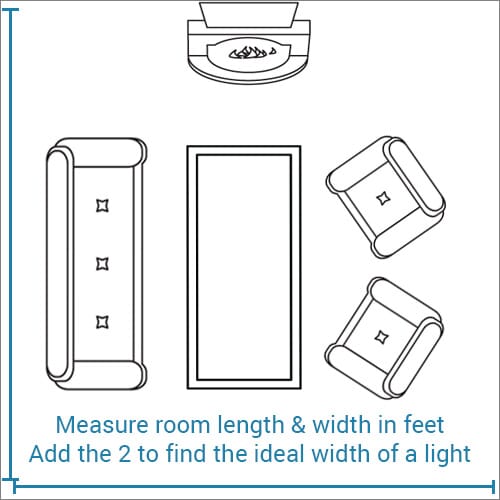
Credit: www.lightsonline.com
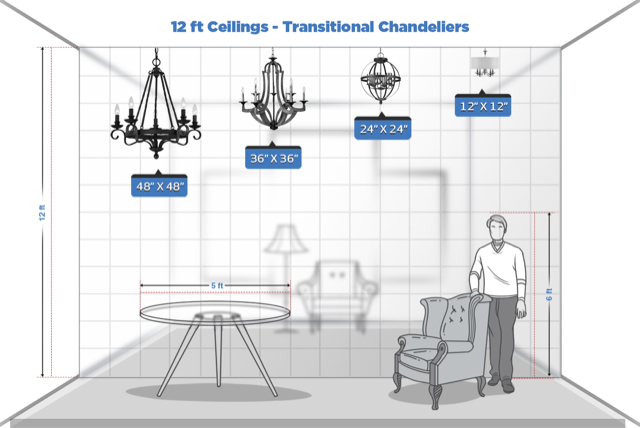
Credit: www.hkinteriors.com
Frequently Asked Questions
How Big Should A Light Fixture Be For A Room?
Choose a light fixture with a diameter that’s 1/12 the room’s width for balanced illumination. For rooms with ceilings over 8 feet, add 3 inches of fixture height for each extra foot. This ensures the fixture complements the room size while providing adequate lighting.
What Size Light For A 12×12 Room?
Choose a light fixture with approximately 2,500-3,000 lumens for a 12×12 room. This ensures adequate brightness. Consider LED options for energy efficiency and longevity. A ceiling-mounted light or a combination of ceiling and floor lamps works well for even light distribution.
What Size Light Do I Need For My Room?
Choose light size based on room dimensions. For small rooms, 12-18 inch fixtures work best. Medium rooms need 19-24 inches. Large rooms require 25-30 inch lights. Consider ceiling height and style for optimal lighting. Ensure proper illumination to enhance ambiance and functionality.
Conclusion
Choosing the right light fixture size matters. It affects room balance and mood. Measure your space carefully. Consider ceiling height and room purpose. This ensures the fixture complements the room. Small fixtures suit cozy spaces. Larger ones fit grand rooms.
Always match the fixture with room style. This creates a harmonious look. Remember, light impacts how you feel. So, pick a fixture that enhances your space. Making the right choice brightens your home and life.

